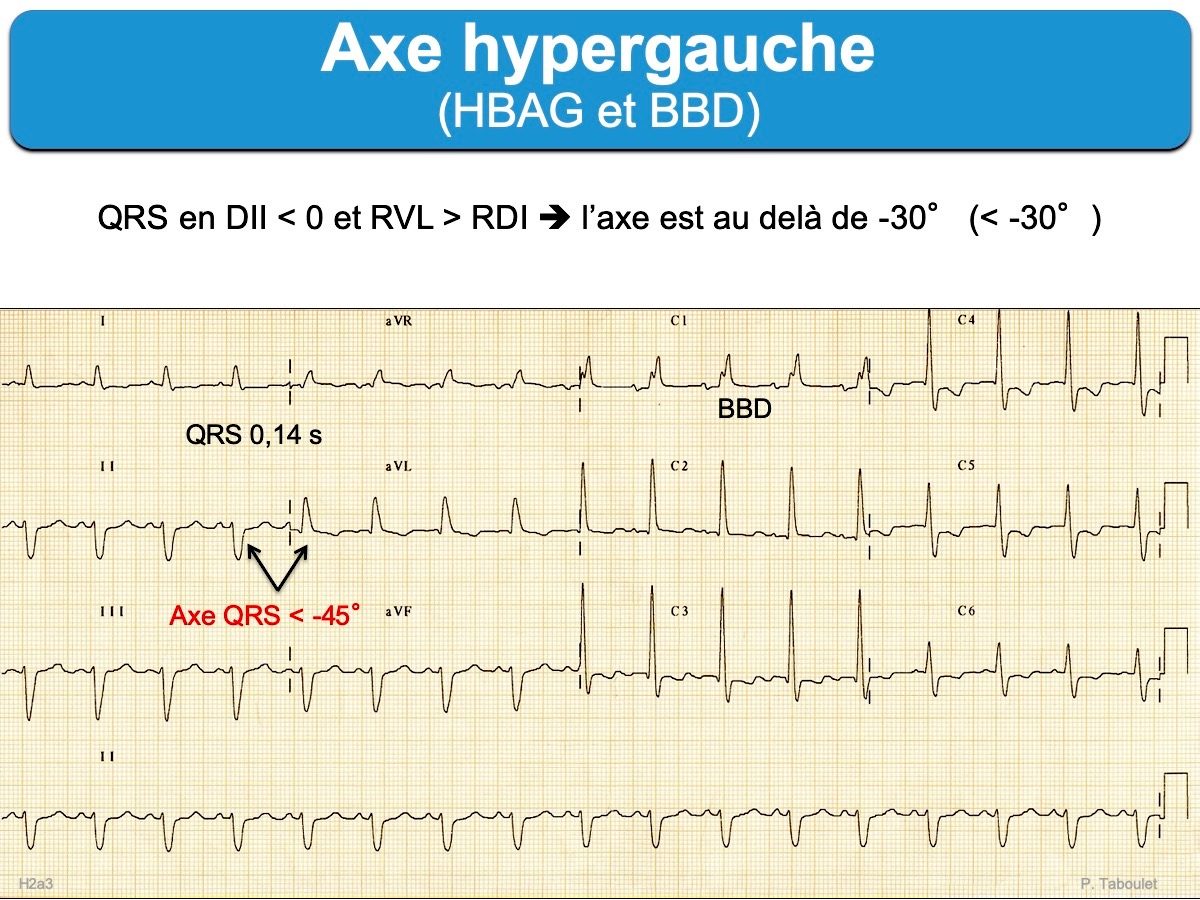L’axe électrique du cœur est dirigé physiologiquement vers la gauche du coeur dans le plan frontal (-30 et 90°).
Axe gauche
- Axe vertical du cœur entre -30° et -45° (QRS négatifs en DII avec R < S, positifs en DI-VL avec R VL comparables à R DI) [1].
Axe hypergauche
- Axe vertical du cœur < -45° (QRS négatifs en DII avec R < S, positifs en DI-VL avec R VL > R DI) [1].
Un axe gauche est physiologique chez certaines personnes (sujet bréviligne ou âgé)
Sinon, un axe gauche doit faire rechercher une surcharge ventriculaire gauche, un bloc fasciculaire antérieur gauche au-delà de -45°, une préexcitation ou une séquelle d’infarctus dans le territoire inférieur.
[1] Surawicz B, Childers R, Deal BJ, et al. AHA/ACCF/HRS recommendations for the standardization and interpretation of the electrocardiogram: part III: intraventricular conduction disturbances: a scientific statement from the American Heart Association Electrocardiography and Arrhythmias Committee, Council on Clinical Cardiology; the American College of Cardiology Foundation; and the Heart Rhythm Society: endorsed by the International Society for Computerized Electrocardiology. Circulation. 2009;119(10):e235–e240. The mean frontal plane electrical axis, determined by the vector of the maximal (dominant) QRS deflection, depends on age and body habitus…. In adults, the normal QRS axis is considered to be within -30°and 90°. Left-axis deviation is -30°and beyond. Moderate left-axis deviation is between -30°and -45°. Markedleft-axis deviation is from -45° and -90° and is often associated with left anterior fascicular block.

